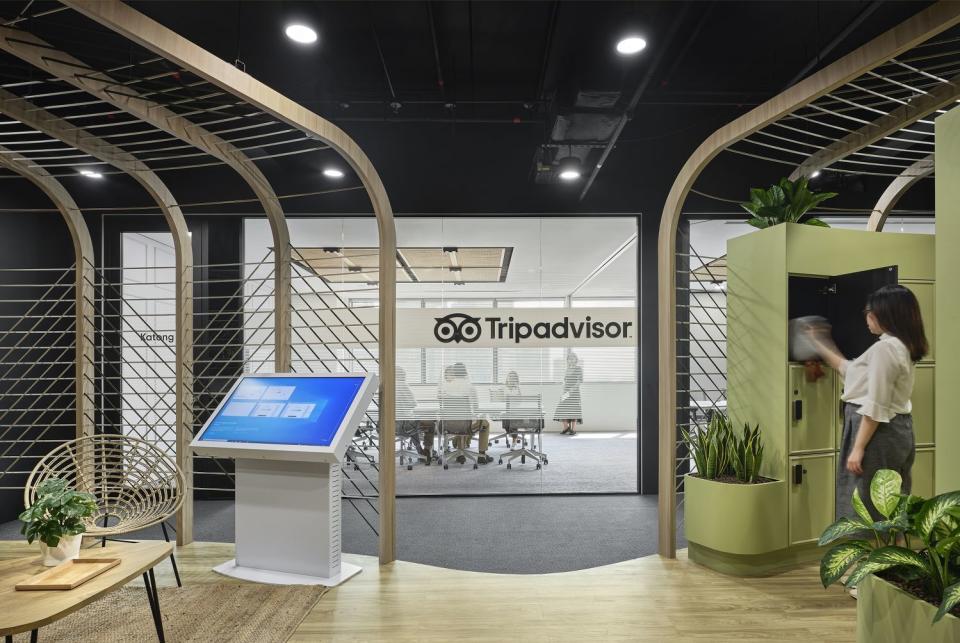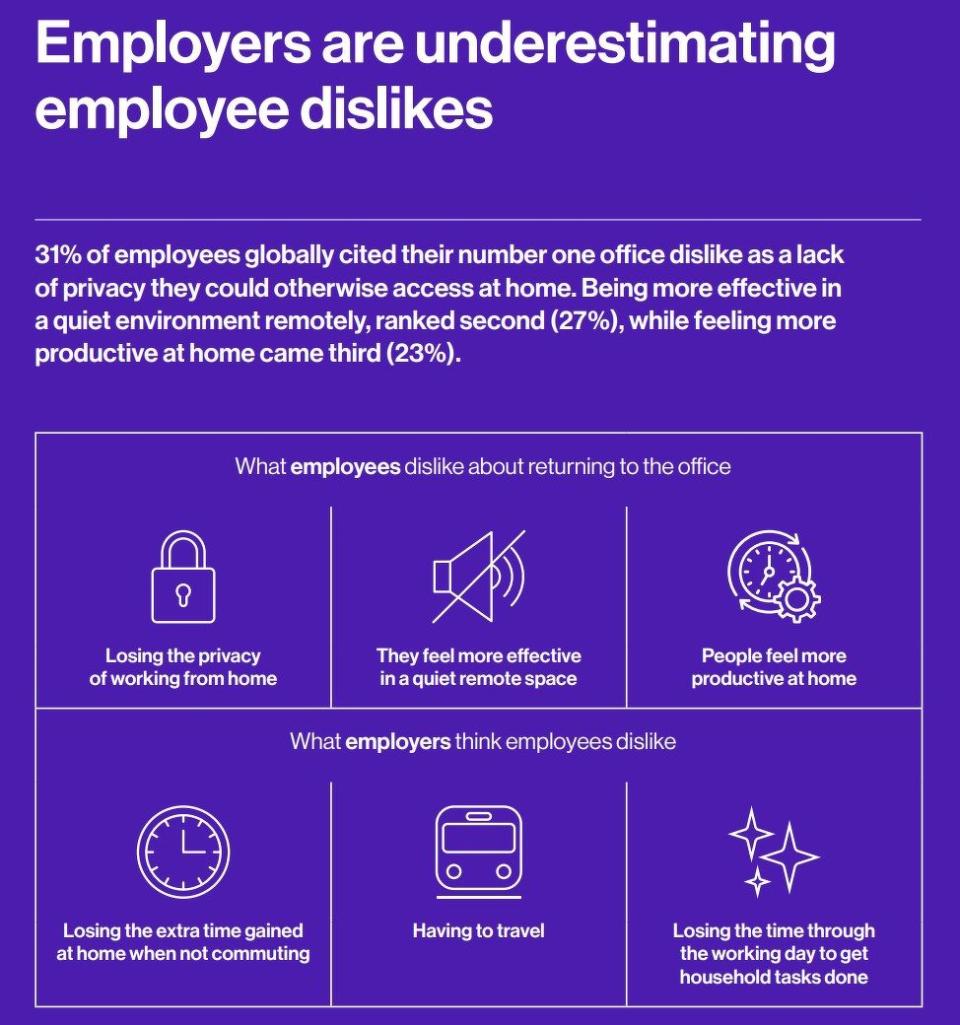Lack of productivity behind reluctance to return to the office: Unispace

SINGAPORE (EDGEPROP) - Given the choice, many office workers in Singapore would rather work from home than commute to their offices. A recent survey by international office design firm Unispace suggests that most employers do not understand the core reason behind this reluctance to return to the office.
“Singaporean workers remain reluctant to return to the office, with many unhappy with the facilities their employers provide which do not enable them to carry out their duties as best they can,” says Sean Moran, senior principal of client solutions, Asia, at Unispace.
The Unispace Global Workplace Insights report titled Returning for Good surveyed 9,500 workers and 6,650 business leaders across 17 countries worldwide, including 500 Singapore employees and 250 senior decision-makers in Singapore companies with over 50 employees.
Misunderstanding between employers and employees
Moran notes that a disparity exists between employers and their employees that revolves around what each thinks the modern office should look like and provide.
According to the report, the surveyed business leaders in Singapore seem to have misunderstood what is hindering a more widespread return to the office, believing that their employees’ reluctance stems from a lengthy daily commute and “the ability to eat more healthily at home”.
On the other hand, about 68% of the surveyed Singapore employees said that they struggle to do their core job within their existing office environment due to distractions. They cite a lack of privacy in the office compared to their home offices; feeling more productive in a quiet remote working environment; and the belief that they are more productive at home.

Singaporean workers remain reluctant to return to the office, with many unhappy with the facilities their employers provide, says Moran. (Picture: Unispace)
“While employers believe that workers’ reluctance to return to the office is based on convenience, employees are more concerned with working in spaces that are free of distractions and allow them to work more effectively,” says Moran.
He adds that while more than half (56%) of the surveyed Singapore employees are hot-desking in the office, 94% of this group say that they would be happier to go to the office more frequently if they had an assigned space. Moreover, 61% indicated that they would be willing to take a pay reduction to work from home, and 66% say they are negatively impacted from burn-out.

Crafting effective workplaces
Employers need to start getting their office design and space planning on track, or risk finding it more challenging to attract and retain talent, says Moran. “The office space is the first impression candidates get when they come for the interview. It’s a preview for the candidates to see where and how they would work in the next few years. The office space reflects the company culture.”
He suggests that employers consider more spaces with privacy for their employees in their office design, such as phone booths and small meeting rooms. But this also depends on the company culture, thus surveying employees to understand their needs and requirements is crucial before embarking on a revamp.

Unispace also advised Tripadvisor in the design of its office space. (Picture: Unispace)
In Singapore, the office market is facing challenges that stem from a low supply of new Grade-A office buildings, as well as rising construction and office fit-out costs, says Moran. On the other hand, Unispace found that 76% of business leaders it surveyed in Singapore say that they have expanded their office footprint over the last two years. Others are planning to reconfigure existing offices.
“We have been seeing more companies invest in building and/or reconstructing their workplace post-Covid to encourage their employees to return to the office,” says Moran. An erosion of human connectivity during the pandemic contributed to many companies losing their talent amid lower engagement and commitment, he says.
He adds: “Though rental fees, manpower and construction fees are higher in Singapore, the workplace will have KPIs for the companies in terms of talent acquisition and retention.”
This is where office design steps in to balance the needs of employees and employers, juggling office density, collaboration areas, and other amenities, says Joanne Morris, head of design and delivery, Asia, at Unispace.
“More companies are building larger, shared spaces with leisure elements like gaming areas, fitness facilities, and pantries with free beers; even the banking and legal industries — which are perceived as traditional and conservative — are open to hot-desking and meeting rooms with creative elements to increase employee engagement,” she says.

In Singapore, Unispace worked on the redesign of VaynerMedia APAC, a creative agency at 1557 Keppel Road. About a fifth of the workspace is occupied by a stage for multi-functional activities such as launch events, photoshoots and town halls. There are also several areas for collaboration rather than dedicated desks, and most of the work spaces are open areas.
Moran notes that a focus on the office experience is especially pertinent as a new generation enters the workforce. “We have seen more companies offering more amenities to attract their employees back to the office, such as a gaming zone, free beer and snacks, and comfortable furniture. All these would definitely attract [the younger generation],” he says.
Future trends
Looking ahead, Moran sees an emerging trend among some occupiers that are considering relocating to Grade-B buildings in the CBD and city-fringe, shophouses, and high-quality industrial areas. These real estate alternatives are more attractive to some companies due to the size and flexibility of the space.
“We see more companies have been changing their strategies, from having traditional workstations to adding more sustainable and wellness elements to their workplace,” says Moran. “More open and wellness spaces would provide a more comfortable working environment…which would attract more employees back to the office and retain them.”

The office design of eazy Singapore, by Unispace.
For companies that are embarking on a redesign of their office, it is an opportunity to engage workers to create workplaces that allow people to prosper. “Singapore’s high burnout rate (66% compared to a global average of 59%) indicates that it’s incumbent on employers to provide workers with the facilities they need to carry out their duties as best they can,” says Moran.
The survey shows that employers and employees in Singapore expect greater time spent in the office in the coming years, although a high proportion of workers say they struggle to carry out their core job there, he notes. “This suggests that businesses have yet to create spaces that allow their people to be as effective at work as they are at home.”
See Also:
Singapore Property for Sale & Rent, Latest Property News, Advanced Analytics Tools
New Launch Condo & Landed Property in Singapore (COMPLETE list & updates)
En Bloc Calculator, Find Out If Your Condo Will Be The Next en-bloc

 Yahoo Finance
Yahoo Finance 